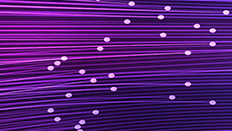Shadow's Exciting New Features
In this podcast Jeff Overton, the Shadow Product Marketing Manager from Progress DataDirect, highlights the new features available on Shadow 7.2.1. This podcast runs for 7:29.
You may listen to the podcast here: http://blogs.datadirect.com/media/Shadow_7.2.1_Release_NewFeatures.mp3
Jeff Overton:
Actually, there’s many new capabilities and enhancements in this release. I guess the best way of kind of starting this discussion is really the way in which we took or the approach in which we took for the development of these capabilities and enhancements was really focused again on our core goal which is to simplify the integration process to the mainframe by expanding the use cases where the mainframe can participate. And, fundamentally, the lowering the cost of mainframe integration. So, reducing complexity and the lowering the total cost of ownership is really the way in which we looked at all of the enhancements and capabilities that we’ve introduced in Shadow 7.2. With that being said, you can kind of look at these or you can group these enhancement capabilities really into five functional categories. So let’s just kind of look at them real quickly one at a time.
First off is we’ve made significant new set of capabilities for integration to mainframe data by providing ANSI SQL92 access to both IMS databases and VSAM data under the control of CICS. And while ANSI SQL92 has been around for quite some time, what’s very unique about our offering is the ability to couple the interoperability benefits of ANSI SQL92 with the unique architecture that we have that can help reduce the operational costs associated with ANSI SQL92 access to non-relational data. So what I mean there is that when you are providing ANSI SQL92 access, you’re really helping expand the pool of developers who can participate in mainframe integration. You’re expanding the pool for the toolkits available to use for access to the mainframe. So that helps reduce the costs on the development side. But when it comes to the runtime side, providing relational access to something that is not relational is, or can be, processor intensive. However, with the Shadow implementation, we’re able to move up to 99 percent of that Shadow-specific processing that’s required to provide the ANSI SQL capabilities to this non-relational data. Move it off the general purpose processor (GPP) onto the zIIP specialty engine where it can run at a much higher speed, can run, also, at a very high capacity, as well as not be counted against the capacity of the mainframe. So there is significant new ground that can be used or broken here by using ANSI SQL92 access to CICS VSAM as well as IMS DB.
We talked about one of the five categories of the new enhancement to 7.2. The second one is the support for mainframe SOA. We’ve had rich support for exposing mainframe programs as service providers for quite some time, as well as allowing those mainframe programs to participate as requester programs. So we’ve expanded the support for these requester programs by enabling not only COBOL programs to make Web services calls, but now PL/1 or even Natural programs. And in addition, we’ve enhanced our API because we know that these types of programs can run in high-transaction environments, such as IMS/TM, and in these environments the latency that can be introduced for the time between when a Web service call is made by a program and when the request is received is really arbitrary. It really depends on a number of factors outside of the control of the program and even the mainframe. It could be making a call to a Web service that’s heavily loaded -- perhaps in a partner environment -- or not even available. And so that latency time is unpredictable. In certain environments such as IMS, that can adversely affect the other programs that are running within that region. And in this release what we’ve done is we’ve enabled these programs to make the Web services call in an asynchronous fashion. And what that means is they can make the call, and then they can go off and do other work and come back and check to see if the web service call has been processed and received. And they can pick up those results and continue processing with those Web service results. And again, the benefit here is that it helps improve the performance overall in that environment by not having this program blocked and wait for the Web service request.
So the third area then is really the ability to support the newer capabilities introduced in IBM DB2 for z/OS version 9.1. And in that version of DB2, IBM has introduced some additional data types, VAR-binary, indigenous data types as well as the core for SQL based data procedures. I’m happy to say in Shadow 7.2. we support those new data types and support for SQL server procedures.
The fourth area of enhancement is around our Event Driven Architecture (EDA) when IMS DB is involved. And, our event-service capabilities, something we call Shadow z/Events, allows mainframe data systems to have their changes captured in a noninvasive way. Those changes can then be evaluated for context, enriched, and then published out so that they can be used in applications such as change data capture used to support an off mainframe operational data warehouse, or even to drive other SOA events. And so in this case what we’ve done is we’ve gone ahead and put in support for really 24x7 assured capture of IMS events, so this is a way that customers can now expand the use of event capture capabilities for IMS to make sure when they’re in a high availability environment where those events need to be captured 24x7, we can provide that assured capture capability.
And, finally, really, the fifth area is about the installation and the maintenance of the Shadow software. We realized that systems programmers are under more pressure than ever, and the ability to manage their software portfolio in a consistent manner is an important capability to them. It helps simplify their tasks. It helps improve the quality of their software products or the software experience that the developers and the overall organization receives from their software investment. So, in Shadow 7.2., we’ve enhanced our installation and maintenance capabilities to now leverage the SMP/E or system Modification Program Extended, which is an IBM software program for installing maintaining software on the new z/OS operating system.
So that’s, again, the five key areas of enhancements. The support for additional data sources and enhanced ANSI SQL access, support for mainframe setup through Web service requester program, so COBOL, PL/1, Natural programs, are now supported as well as asynchronous Web services calls, support for new features introduced in DB2 9.1, support for 24x7 capture of IMS Events, and finally installation and maintenance improvement with SMP/E. So that’s a quick overview of the major components of 7.2.

Jeff Overton
View all posts from Jeff Overton on the Progress blog. Connect with us about all things application development and deployment, data integration and digital business.
Comments
Topics
Sitefinity Training and Certification Now Available.
Let our experts teach you how to use Sitefinity's best-in-class features to deliver compelling digital experiences.
Learn MoreMore From Progress
Latest Stories
in Your Inbox
Subscribe to get all the news, info and tutorials you need to build better business apps and sites


